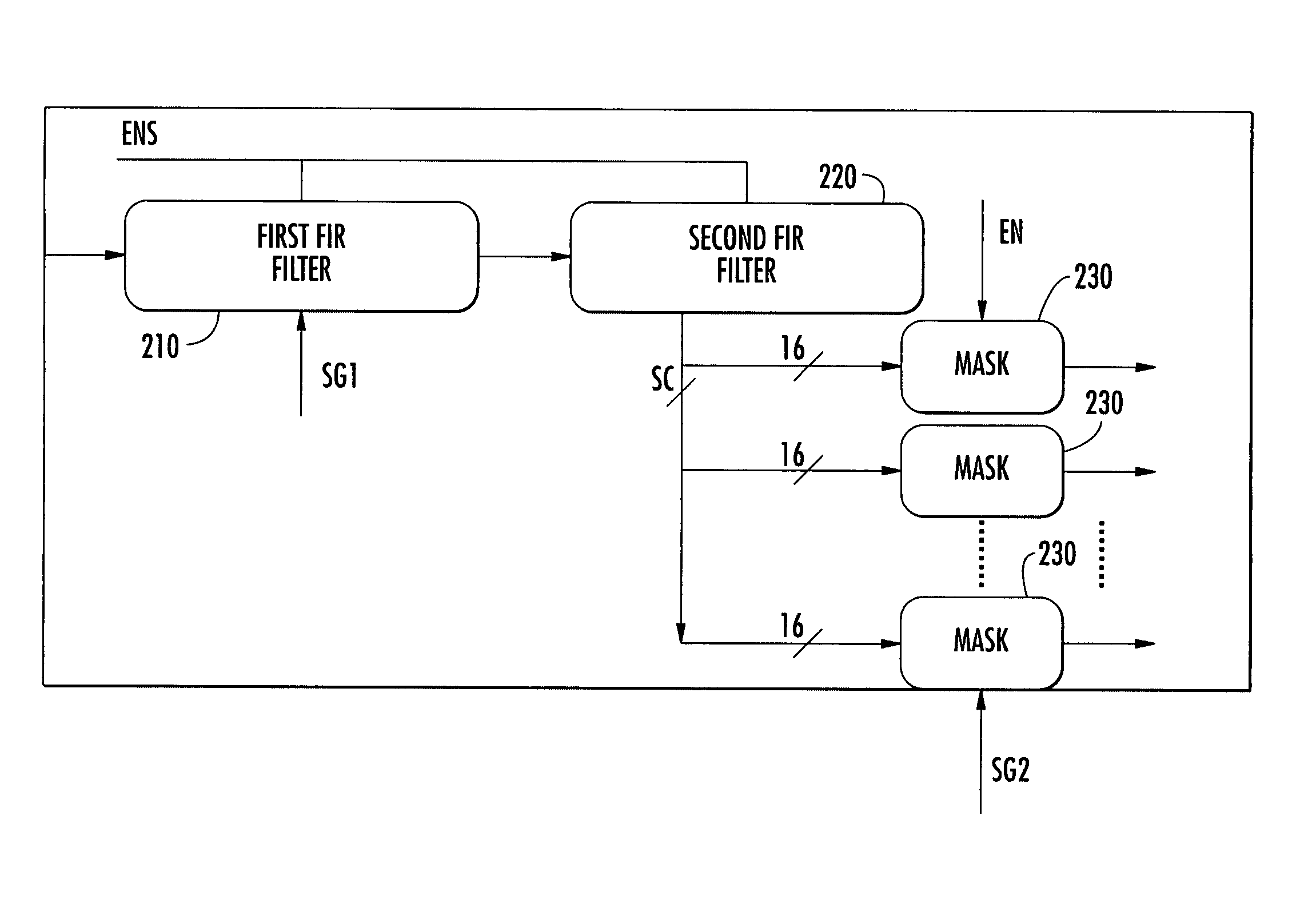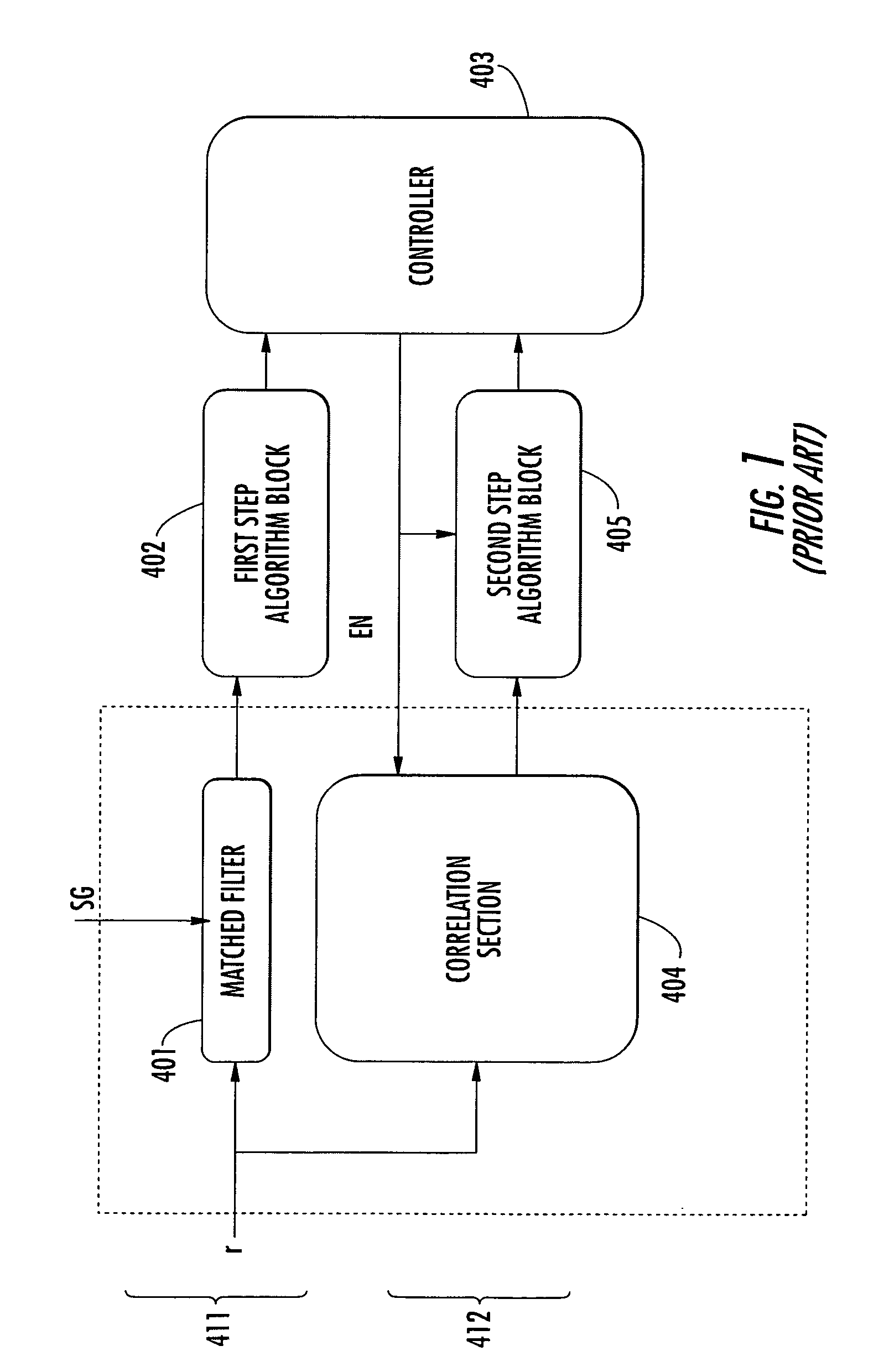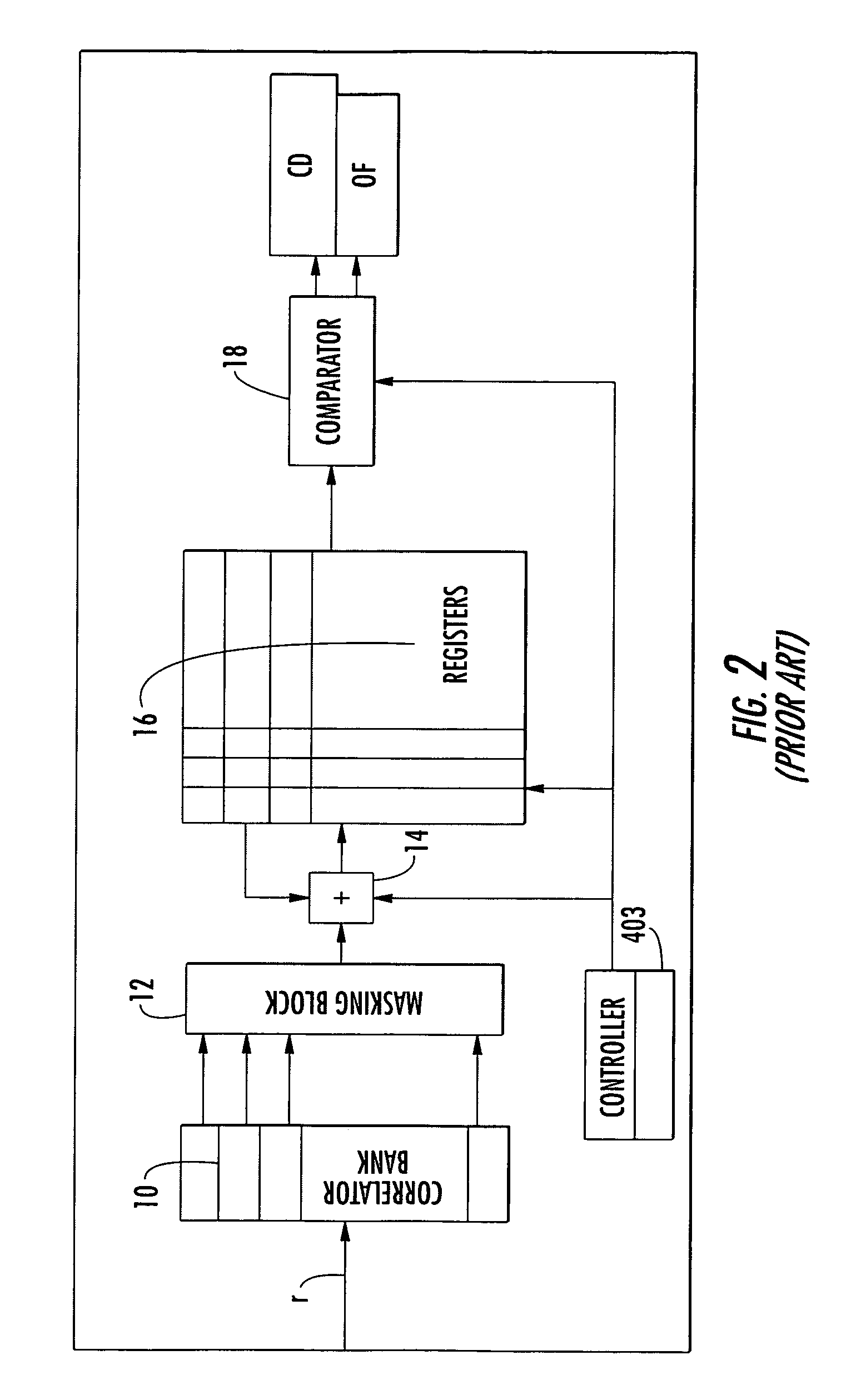Process and device for synchronization and codegroup identification in cellular communication systems and computer program therefor
a technology of cellular communication system and codegroup, applied in the field of telecommunications systems, can solve problems such as power consumption in the future, and achieve the effects of reducing computational complexity, reducing processing circuit size and memory size, and occupying less spa
- Summary
- Abstract
- Description
- Claims
- Application Information
AI Technical Summary
Benefits of technology
Problems solved by technology
Method used
Image
Examples
first embodiment
[0041]Turning to FIG. 5, a parallel architecture for implementing the correlation section in FDD mode is now described. The received signal r is sent at the input to a first matched FIR filter 210, which includes sixteen registers and a corresponding number of output taps. The first filter 210 also receives at its input a first Golay sequence SG1 for the secondary code SSC to carry out the filtering as described above.
[0042]The signal thus filtered by first filter 210 is sent to a second filter 220, which is also an FIR filter with two hundred and forty registers and sixteen outputs. Operation of the second filter 220 is driven by an enable and stop signal ENS, which likewise operates on the first filter 210, for enabling storage in the filters of the received signal r for the subsequent operation of correlation with the secondary codes SSC.
[0043]The first filter 210 and the second filter 220 together make up a matched filter, corresponding to the filter 401 of the primary channel P...
second embodiment
[0045]a serial architecture for implementing the correlation section in FDD mode is illustrated in FIG. 6. The received signal r is provided at the input to the first matched FIR filter 210, which also receives the first Golay sequence SG1 for the code SSC. The first filter 210 is followed by the second filter 220, both of which are driven by the enable and stop signal ENS.
[0046]The second filter 220 then supplies at its output the 16-bit correlation signal SC to a mask 231, which is designed for applying the weights corresponding to each secondary code SSC. The mask 231 receives the secondary code SSC to which the weight from an appropriate code generator 233 is to be applied. The code generator supplies the second 16-chip sequences for the secondary codes SSC and is driven in turn by a 16-value counter 232, which supplies the generator with the number SSCN of the secondary codes SSC to be correlated.
[0047]Both the counter 232 and the code generator 233 are also driven by an enabli...
PUM
 Login to View More
Login to View More Abstract
Description
Claims
Application Information
 Login to View More
Login to View More - R&D
- Intellectual Property
- Life Sciences
- Materials
- Tech Scout
- Unparalleled Data Quality
- Higher Quality Content
- 60% Fewer Hallucinations
Browse by: Latest US Patents, China's latest patents, Technical Efficacy Thesaurus, Application Domain, Technology Topic, Popular Technical Reports.
© 2025 PatSnap. All rights reserved.Legal|Privacy policy|Modern Slavery Act Transparency Statement|Sitemap|About US| Contact US: help@patsnap.com



